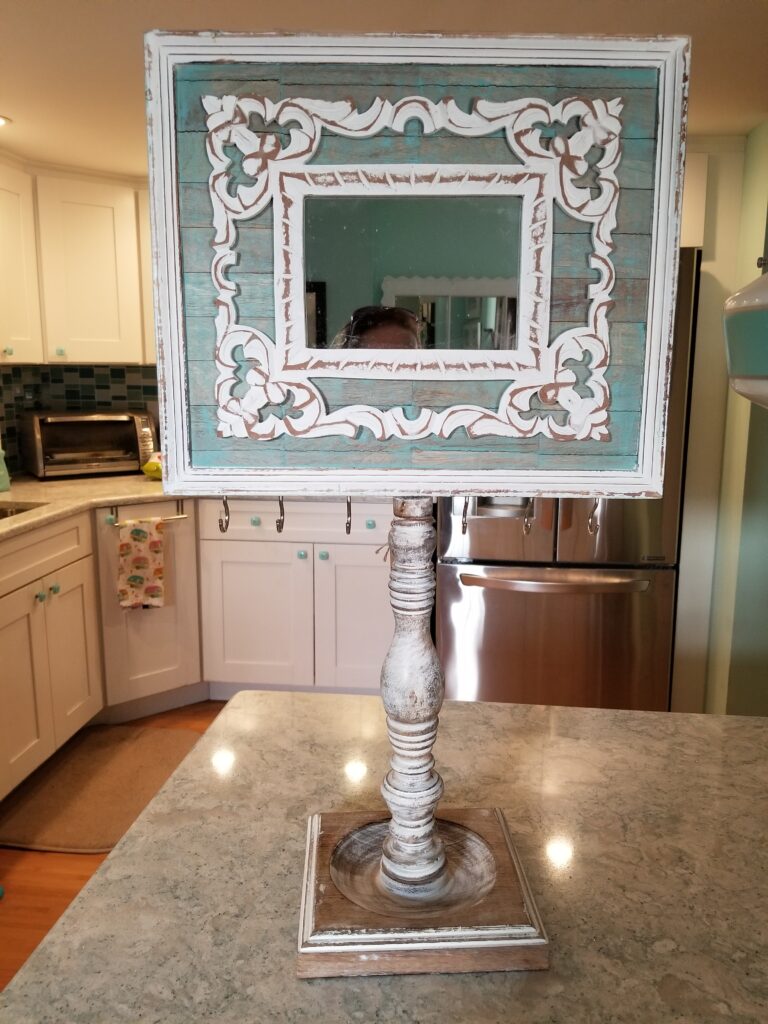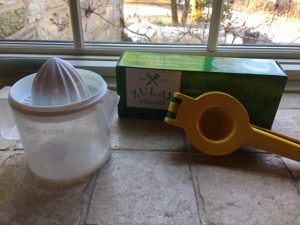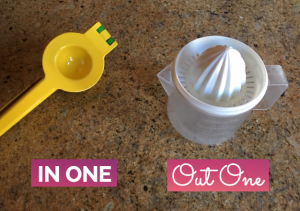As parents face the annual back to school routine this year, perhaps we need to revise the standard preparation for the first day of school. Rather than discuss how to organize your physical “stuff” for school, we are going to discuss the ABC’s for organizing a plan to address stress during this challenging time.
ASSESS
Many parents experienced the challenge of online learning (aka – distance learning or at-home learning) with their children this spring. As school openings fast approach, it is a good time to stop and assess how that online learning experience went for your family. What worked well? What did not work well? And most importantly, why didn’t it work? The best way to find a solution to a problem is to understand the root cause of the problem. If your child was too distracted or had difficulty paying attention to online sessions, think about why he or she was distracted and do your best to address that distraction. Was their sibling doing their lesson in the same room? Were toys in the room that caught their attention? Was background noise a disturbance? Perhaps switching the room for their online learning or putting away some toys may lessen the distraction. Wearing ear buds might reduce the background noise. There is no one size fits all answer to this issue or any other issue you may have encountered. The key is to figure out why the situation did not work so you can identify a solution that will work for your family. And, for those who have not been through online learning as of yet, reach out to family and friends who have experienced it and get their input on what worked for them to see if it can work for your family.
BALANCE
Dealing with our children can be challenging in general. So, having to deal with online learning or blended learning, in addition to normal daily stresses, can be overwhelming for some. Many parents are also trying to work from home which compounds that stress. Finding balance amidst the chaos may be beneficial. Take time before school begins to identify ways to balance the hectic environment that may exist during the school day. A quick 5 to 10-minute stress-reducing activity should provide relief. The list below is in no way all inclusive.
Also, our children are not immune to the stress that online learning may create. They may find some of the items above useful when they encounter a feeling of anxiety. Here are a few additional suggestions:
Figure out what works best for you and for each of your family members.
COMMUNICATE
Creating a productive environment for both you and your kids is a goal for many parents. Open communication can contribute to that goal. Does your spouse know you have a 10am conference call and he or she needs to handle any issues that may pop up during that call? Does your son have a test tomorrow and needs quiet time to study? Is your daughter struggling with a lesson and needs additional tutoring? Having open discussions about the needs of each family member can go a long way to reducing stress during the day. The discussions don’t need to be formal. While clearing the dinner table ask a question like “Do you need anything from me to prepare for tomorrow?” or “Are you stressing about anything and, if so, how can I help?” Speaking to someone about their needs can help ease their tension. And don’t forget to let your family know of your needs as well. If they don’t ask you what you need, you can bring it up to them. Let them know that you have that conference call at 10am and ask that you not be disturbed for that hour. Remind them that the dog needs to be walked at lunchtime and ask who can help with that task. Communicating effectively will let each family member know you are all there to support each other.
Using the ABC’s above may not eliminate all the stressors you will face this school year. However, utilizing Assess and Communicate as proactive steps to help prevent stress, and incorporating Balance when stressful situations arise, may help you get back on track and allow you to have a productive day.
Karen Kabara
Your Tasks – Our Time, Inc

Organizing can be tough…scratch that…starting the process of organizing can be tough! In my own personal organizing projects, and those of my clients, I will typically suggest doing one, or all, of the following strategies to make it a bit easier…and less painful too!
Music – Music is a great motivator and can keep you moving and grooving while you are working on your organizing project.
Scavenger Hunt – Doing a scavenger hunt can also be motivating. I often suggest to my clients to do a search throughout their home for empty bins and baskets, or even repurpose said items. This will not only save you money in the process, but time as well. Yes, I love browsing through the aisles of HomeGoods and The Container Store (probably just like you!), but that just delays the inevitable start.
Shopping – If you really want to shop…like really, really…then find something that you love! It could be a storage piece (if the room allows for it), pillow, or piece of artwork, etc., to incorporate into the room or area that you will be organizing. It could be a huge flat screen TV for all I care! It doesn’t have to be expensive, just something that makes you happy and that you’ll enjoy looking at every time that you are in the space!

For one of my next projects at my home, I will be reorganizing my jewelry. While I was doing my holiday shopping, I came upon my IT. Do you ever have one of those moments where you find the perfect thing, for the perfect place, for the perfect price? Well, if you never have experienced that trifecta, I must tell you, it feels AWESOME! My piece is shown in the picture above.
I had tried several methods of organizing my jewelry over the years, but nothing had really stuck. At first, I was using jewelry boxes with velvet lined drawers. Next came the stacker trays with individual spots for earrings, rings, necklaces, etc. I’ve come to the realization lately though, that unless my jewelry is visible, I probably won’t wear it, and that’s no fun!
If you take a closer look at my newfound treasure you will note the 6 hooks for necklaces at the base of the mirror portion. Plus, the piece is tall enough, that longer necklaces won’t puddle and tangle. Additionally, the well at the base is perfect for smaller earrings or a watch or two. I’d also previously found 2 small 3-tiered trays to compliment this piece, for earrings and rings. They are in turquoise, which is my favorite color too!
When I start working on this project, I also plan to let go of and donate any jewelry that I haven’t worn in a long time. Organizing is always easier when you start with less! I also plan to listen to some great music while doing it.
Comment below if you have ever found a trifecta of your own and if it has helped you get organized in your home!
If you’ve ever wondered, do organizers really practice what they preach?
I am here to say, YES! In my case, I follow 4 basic rules*:
1. Decide where things live
2. Return items to their “home”
3. Follow In One/Out One
4. Build routines around maintaining systems
 The third rule, In One/Out One, is the least appreciated and most neglected by our clients, even though it offers the best defense against clutter build-up.
The third rule, In One/Out One, is the least appreciated and most neglected by our clients, even though it offers the best defense against clutter build-up.
Here’s a personal story of how it recently went down in my house.
First you have to know that I LOVE citrus. Fresh lemon juice goes into every salad dressing. Fresh lime juice refreshes most fruit bowls. Many of my fish recipes require fresh lemon, lime or orange juice. So my juicer has been a staple in my kitchen. I love that it not only does a great job, it also attaches to a measuring cup – which makes it easy to know when I have enough.
Pictured below on the left, it had a primo spot in my most accessible gadget drawer just below my prep counter. Until…
 My husband, an aspiring minimalist, bought me a new juicer. He had researched to get me “the perfect gift.” I was skeptical, even though for him to buy something it MUST be great. I could not imagine HOW anything could replace my beloved juicer.
My husband, an aspiring minimalist, bought me a new juicer. He had researched to get me “the perfect gift.” I was skeptical, even though for him to buy something it MUST be great. I could not imagine HOW anything could replace my beloved juicer.
It would have to at least be:
• super easy to use
• simpler to clean
Well, my new citrus press is all that AND bold and bright. In being so colorful — I smile every time I see it.
 But it took me some time to let go of my trusted fave…2 weeks, in fact. I call it the testing time. Some “old” items deserve this reflective time.
But it took me some time to let go of my trusted fave…2 weeks, in fact. I call it the testing time. Some “old” items deserve this reflective time.
Honestly, it took me a week to open the package and try the new “citrus press.” I felt like I was cheating on my trusted go-to.
Once, I tried it, I set an alarm on my calendar to remind me to “consider if keeping new juicer” and a few days later “decide if still need old juicer.”
When you replace something, even if you are committed to In One Out One, you don’t HAVE to let go immediately. But you must put a time limit on making your decision. (It’s too easy for items to stagnate, clog your drawers and attract more clutter.)
Since I was using these gadgets daily, it didn’t take long to know I was in love. As for my “old” juicer, it still has life left in it. My son is a decent cook at college — so guess who just inherited a new fave? 🙂 When he graduates, I will gift him his very own citrus press!
* Remember I said these were 4 rules that I think every Professional Organizer follows?
It’s true of any organized person.
• You don’t have to be a professional organizer to be organized.
• Some people are MORE organized than their organizer (GASP!)
Yes…it’s true. Not every organizer is the MOST organized person you’ll ever meet.
• Professional Organizers know how to help YOU solve your organizational overwhelms and clutter-crisis.
Did you know that February, aside from being one month closer to Spring (hooray!), is “Pull Your Sofa off the Wall” month? This is the ideal time to shake things up a bit in your living room, especially since this is the time of year when people hibernate in their homes. This time of year is also known for the winter blues, no doubt in part from taking down cheery holiday lights and decorations.
So…what can you do? Aside from becoming a snowbird and heading to Florida, you can add some inexpensive and space saving items to brighten up your space, awaken your senses, and put a smile on your face. Take a look at my own living room to see how I have incorporated some of the following items:
Welcome Mat – For an instant mood booster, find a bright and cheery welcome mat to come home to after a long day at work. Look for inexpensive options at Target or Kohl’s. Also, consider lighting up the pathway to your welcome mat with solar lights that will soak up any sun that may have been out during the day.
Full Spectrum Light Bulbs – I wholeheartedly recommend sun lamps that are used to mimic the natural light from the sun, which is often in short supply in the winter. I have one next to my sofa that I use while I eat breakfast. Another inexpensive approach is to switch out the bulbs in your main reading lights for full spectrum bulbs, which can give off the same effect as sun lamps.
Mirrors – When the sun does appear, take note of where the sunlight streams onto the wall and if feasible, put a mirror there. Note the mirror art above my sofa, which is directly across from a window. This will reflect the sun and naturally make it seem like more sunlight is in the room. Plus, mirrors give off the feeling of a roomier space.
Candles – Find a signature scent that makes you feel calm and relaxed and light it every time you come to stay in the room for a while. Personally, I love the Cashmere Woods scent by Glade. It has a nice and light musky/woodsy smell, perfect for this time of year. Mine is centered in the room on my coffee table to let the scent spread evenly throughout the room.
Pillow Covers – Find decorative throw pillow covers to update and transform your atmosphere. I purposefully chose a neutral sofa and chair for that reason. Pillow covers are also much easier to store than several accent pillows from each season, and they can be freshened in the laundry. Try Bed, Bath and Beyond for a large selection and don’t forget your 20% off coupons! As you can see, I have chosen a turquoise theme; however, if I ever decide to change my accent color, it would be fairly easy.
Throw Blankets – Find throws that are comfy, soft and most importantly, will keep you warm on a cold winter’s night! When not in use, fold them up and place them on the back of your sofa.
Artwork – New prints on the wall along with a few knick knacks on your mantle will give your room a fresh perspective. Incorporate your accent color, as I have done here in turquoise.
I hope these ideas will give you something to think about while you are curled up on your sofa…and by the way, you don’t need to pull it off of the wall if you don’t want to.
Here’s to a warm, cozy and colorful season!
Are you organizationally challenged? Professional organizers frequently hear clients proclaim this as they confess, “I just don’t know where to start” or “I don’t know how things should be set up”. Or, perhaps you are space-challenged, sounding more like this: “I’m organized but there just isn’t enough storage in my home.”
In either case, one way to begin addressing the task of getting and keeping your home, with all its charms and faults, organized is to set up zones.
As an elementary school classroom may have a carpeted area for reading, desks for writing, and an art area with supply cupboards, our homes — and the rooms within — can be arranged so that items found in a certain zone support the activities that take place there.
To make the shift from feeling as though you have everything everywhere to having just what you need where you need it, start by making a list of all the rooms you will address. List the activities you would like to happen in each room as your roadmap toward creating your dream home.
For instance:
Dining Room – eat meals, do crafts
Kitchen – cook, homework, pay bills
Bedroom – sleep, exercise
Beginning with one room, let’s say kitchen, remove all items that have no relevance to the activities you have listed. Do you see any sports gear, toiletries or giftwrap lying around?
All these need to move out.
Once you’ve removed what doesn’t belong, it’s time to address what’s left. Think about what normally happens when you do the activities assigned to this room. Do you run to get a certain supply from elsewhere every time? If so, now’s the time to bring that item in. For instance, if homework and paying bills occur in the kitchen, are the basic supplies for those activities handy? Pens, pencils, stamps, a computer charging station? How about cooking supplies? Are you headed down to the basement for pans you use each month while storing the Thanksgiving turkey plate within an arm’s reach?
After you’ve determined that the supplies you have handy are the ones you need, it is time to set up your zones. Do you have trouble preparing dinner because your counter is cluttered with pens, glue and papers? Decide where homework and bill work is done and designate drawers, cabinets, bins or baskets to house those supplies. Relocate all your kitchen items according to their appropriate zone.
The final step is to assess the amounts that you need.
Now that you have all the writing instruments gathered into one area, will dozens of pens clog the supply drawer making it difficult to find anything else you need? See if just 5 or ten would suffice. Or maybe you haven’t assigned enough space for homework and office supplies.
Do you find that you no longer cook as much as you used to? Perhaps you don’t need to keep all three cupcake pans. When you got that new coffee maker that takes k-cups, did you hang on to the last one? How about the one before that? Do you have the space for all these extra appliances that might be useful again someday but take up lots of living space today?
When your zones are complete, take a moment each day before leaving each room to glance around for items that have wandered out of place and quickly move them back into their appropriate zone.
Let go of clutter and live your dream.

Along with four other Professional Organizers, I had the opportunity to attend a meeting of the Philadelphia Hoarding Task Force and was excited to find out that we are NOT ALONE!
The result of hoarding behaviors touches countless lives. The most obvious is the lives of those with hoarding habits, those who live with them, their children, family members, and close friends. Maybe, less obvious, is the effect of this life style on their surrounding communities. Often times there have been multiple attempts to deal with and support those with hoarding habits resulting in little change and outcomes that don’t last long. Interventions usually focus on having the person divest themselves of things that clutter their living spaces. Frustration, hard feelings are the typical results as little seems to penetrate the multifaceted web of commingled issues, emotions and unrelenting habits that have, more likely than not, spanned the individual’s life time.
This particular and persistent practice of collecting is the manifestation of a complex network of interpretations for the person who engages in hoarding behaviors. For many who are observing these hoarding tendencies, it is virtually impossible to understand, decipher, and make sense of the complexities involved in the condition. Working side by side with clients who engage in hoarding behaviors, I have heard very elaborate and creative explanations for their holding on to what looks like, to anyone else, seemingly useless items. Their ‘need’ to save things is logical in their view, however, the result of their logic is counterproductive to their desire to alleviate their situation that impacts themselves, their loved ones, and in some cases, their community.
Because the result of hoarding behaviors looks like disorganization and clutter, at first glance, it would seem like working with hoarding situations is perfectly suited for the organizing profession. Initially, that was the thinking of the pioneers of our profession until they began to notice that successful organizing methodologies, principles, and products did not seem to work with certain clients. During those early years, organizers tried to impact situations where shower rods became alternate hanging spaces for clothes, dining room tables became storage for piles of papers often flowing over to the accompanying chairs, and beds housed everything else leaving little to no room for the owner. The result, a sub group of NAPO was birthed. Back then it was called NSGCD (The National Study Group on Chronic Disorganization). Today, it is its own independent organization called The Institute for Challenging Disorganization (www.ChallengingDisorganization.org). Their mission is to provide education, research, and strategies to benefit people challenged by chronic disorganization.
Working with these situations for the past 11 years as well as being a member of NAPO and ICD, I have learned that simply talking about the ‘stuff’ with clients is limiting and often times futile. Getting to the reasons and explanations for their need to hold on to items helps to unlock the interpretation that justifies their hoarding behaviors and often times can loosen the grip of their ‘need’ to hold on to things. However, delving into the root cause of these tendencies is outside an organizer’s skill set and training. Teaming up with other professionals such as social workers and therapists, offers more hope for longer-lasting results.
Finding these opportunities to team up with other professionals working with people challenged with chronic disorganization has not been easy until recently when the Greater Philadelphia Chapter of NAPO (NAPO-GPC) was contacted and invited to participate on the Philadelphia Hoarding Task Force. An impressive list of local organizers accepted the invitation, and it was love at first meeting! Finally, we are NOT ALONE in our work with these clients!
Still in its infancy, the mission of the Philadelphia Hoarding Task Force, co-chaired by David Wengert from the Community Legal Services and Katherine Martin, Deputy Policy Director from the Mayor’s office, is to “ensure positive outcomes for those individuals who are impacted by hoarding.” Although the Task Force does not provide direct services, its role is to ensure access to resources, training for provider organizations, and education about hoarding in Greater Philadelphia”. The meeting that I attended with four of my collogues was comprised of representatives from the Philadelphia Police and Fire Department, Licenses & Inspections, Philadelphia Corporation for Aging, and Clutterers Anonymous, to name a few. Each of the representatives brought their unique perspective to the meeting. The shared conclusions was that the work of the Task Force should focus on the individual, not the problem, i.e. the ‘stuff’ and that this perspective should permeate all efforts made by the Task Force, especially in the educational trainings it provides.
A shared understanding of the complexity that leads to hoarding behaviors among the organizations that confront these circumstances, along with sharing resources, expertise, accountabilities, and services, was music to all of our ears!
Finally, we as organizers, can say, we are NOT ALONE in our work with clients who are struggling with habits of hoarding! Collaborating with other professionals helps us offer those challenged by hoarding habits a more holistic service approach, and a hopeful future.
Suggested Resources: